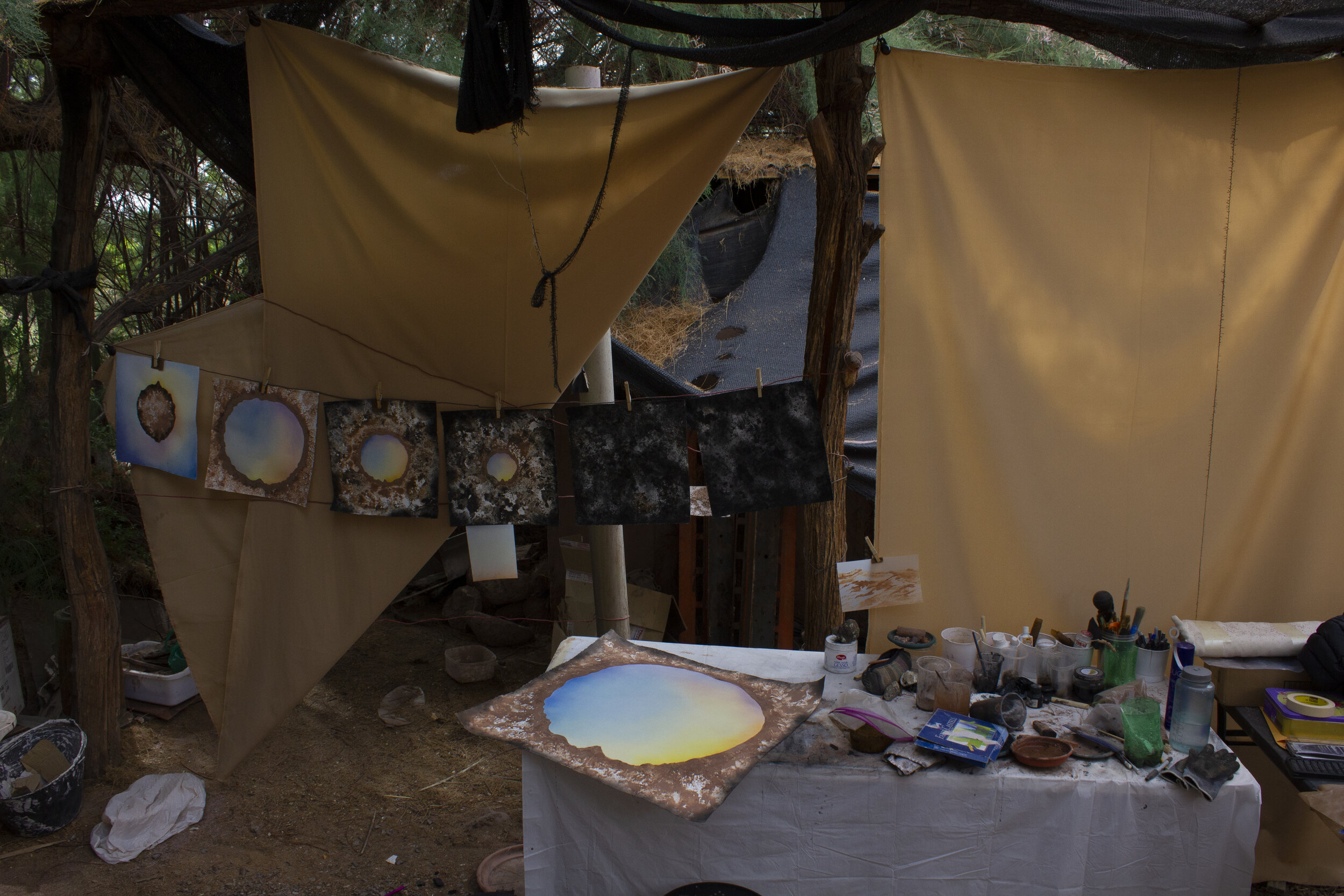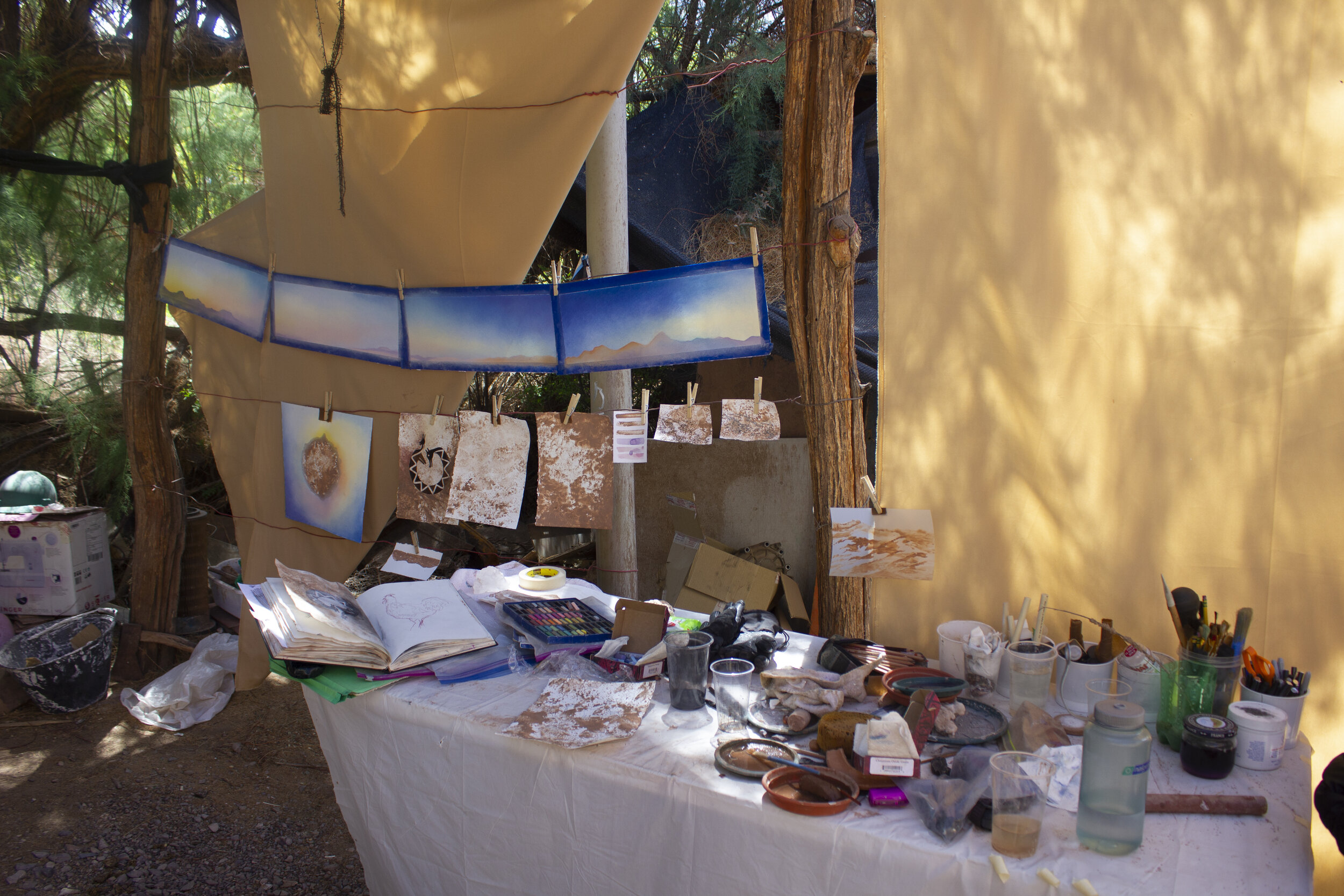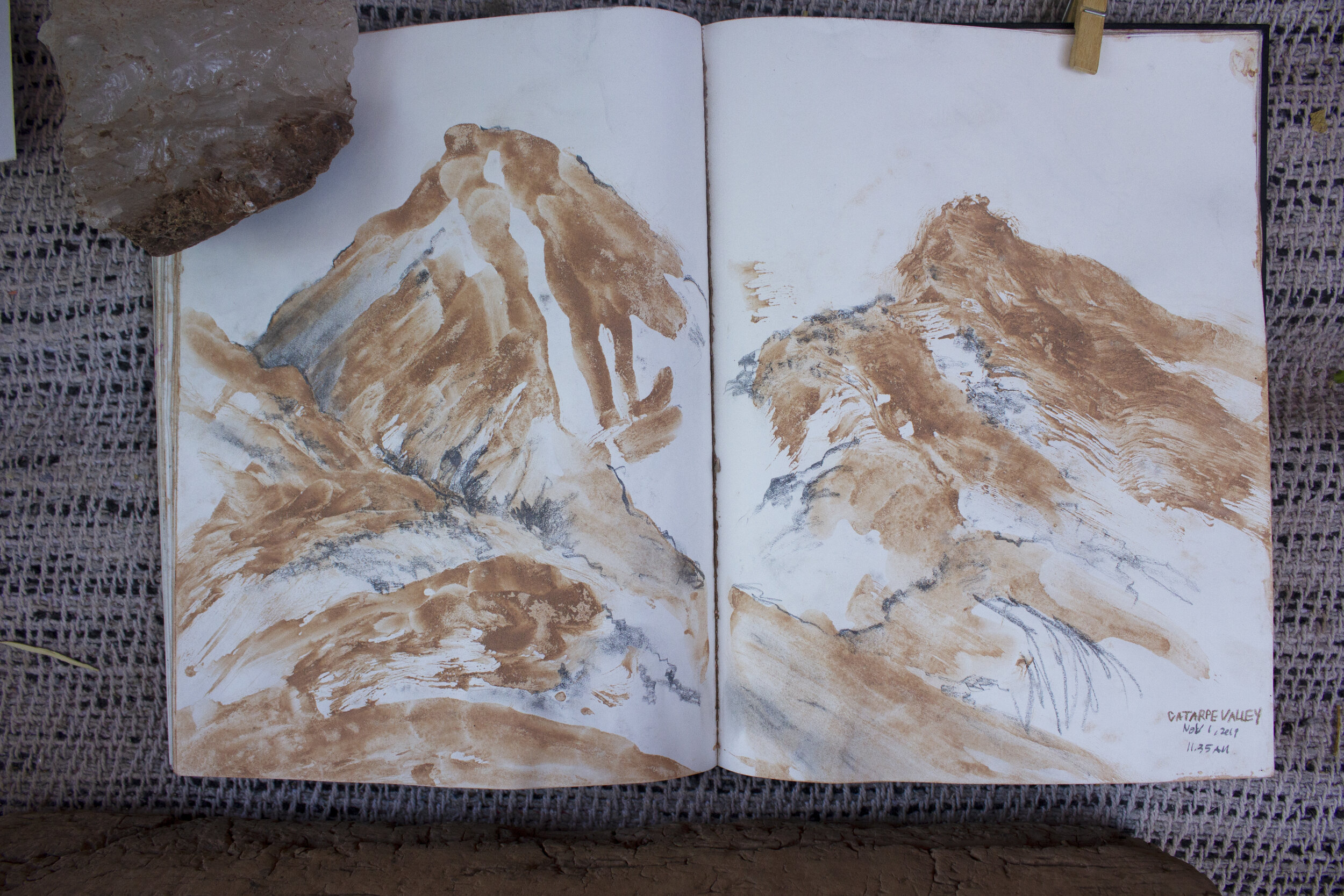Phantasm: Steve Sangapore and Ponnapa Prakkamakul
Currently in the main gallery we are featuring core artists Steve Sangapore and Ponnapa Prakkamakul. Their exhibition, “Phantasm” runs through May 2, 2021. There will be a LIVE at FIVE Instagram conversation on Sunday, April 18th from 5–5:45PM. Gallery hours are Saturday and Sunday from 12–4PM or by appointment. Below the artists talk about their work.
SUPERPOSITION
Oil and ink painting series by Steve Sangapore
Initially starting from a conference room doodle and some half-baked concepts, much of the past two and a half of my studio time has been dedicated to developing and refining a series of oil and ink paintings titled Superposition. My long-standing passion for science gave me the initial direction for the series and my interest in the study of consciousness aided in refining the series’ aim and focus.
Steve Sanapore
”Collapse: Of Nature #6”
Oil and ink on wood panel
24 x 18 x .75 inches
The main question that the series asks is, Does consciousness create the universe?
Modern science, namely quantum theory, tells us that - perhaps - it does. Contemporary science through empirical testing informs us that there may be an inextricable and dualistic link between the observer and the object being observed.
Investigations into quantum phenomena, such as the famous double-slit experiment, have had scientists scratching their heads for decades. The world of the very small is, to put it lightly, extremely counterintuitive. It is a world that, on many levels, continues to be intellectually disconnected from the macroscopic world in which we humans inhabit.
Steve Sangapore
”Discovery”
Oil, ink and gold leaf on clayboard panel
40 x 30 x 2 inches
For decades, physicists have made little progress attempting to unify Einstein's theory of general relativity with quantum mechanics. The inability to reconcile these two theories, which explain the world at the subatomic quantum level (QM), and the universe on its macroscopic scale (GR), is one of the greatest and most challenging issues in contemporary science. A testament to this effort is the sheer abundance of (theoretical) models developed in search of a unified theory - or what has been classically called a “theory of everything.” Further testament to our limited understanding of quantum theory itself is the multitude of interpretive frameworks scientists have devised for thinking about the quantum world. Many Worlds, Consistent Histories, and the Copenhagen Interpretation are just a few ways of interpreting the experimental evidence.
While there are several competing models in quantum mechanics, I am particularly drawn to what physicists refer to as the Copenhagen Interpretation. While this view of the world of the very small is strange and captivating, the implications the theory presents on conscious systems fascinate me and have led me to incorporate these ideas into my work.
Pioneered by Niels Bohr and Werner Heisenberg in the early half of the twentieth century (in Copenhagen, Denmark), the Copenhagen Interpretation interprets data, such as the findings of the famous double slit experiment, as, in part, being dependent on observation.
The universe is made of particles, but particles also behave as waves. In fact, a particle always exists in a probabilistic wave state where it inhabits any and all possible locations in space (often referred to as a superposition) prior to its observation. It is the act of interaction (or observation) that will “collapse” the wave function of a particle and reduce its state from inhabiting infinite potential locations, to inhabiting a single position of locality in time and space.
The implication is that through this dualistic process, conscious systems influence, and, in a sense, create what we perceive as “objective” reality. Without the act of conscious interaction and subsequent wave-function collapse, what we consider objective reality may in fact be a vast, infinite sea of potentiality with nothing definite ever happening or existing. In short, the universe may only be around because we are here to experience it.
Steve Sangapore
”War in Heaven”
Oil and ink on wood panel
48 x 36 x 2 inches
The superposition oil and ink painting series explores the implications of this idea by splitting the canvas into two halves. On one side of the panel there is the world as we perceive it, which is rendered using oil paint. The delivery is familiar, defined and full of color and emotion. On the other, I employ spontaneous line work in black and white, illustrating the unintuitive, non-locality of the quantum world.
My aim was to have two visually contrasting approaches for how each of the painting halves were represented. The physical execution of representing a single subject using both abstract line-work and objective realism creates a strong dichotomy for the series. The contrast of the two approaches invites the viewer into a conversation between the two vastly different ideas of how nature works and is experienced.
The particular subjects chosen for this split-panel execution add an additional dimension to the work. Each piece depicts significant people, places and events in my life. From the Belgian landscape to narratives about loss, each installment to the series is a marriage of my interest in science with personal story and narrative.
BEYOND PLANET EARTH
A collection by Ponnapa Prakkamakul
My work always focuses on landscape and my relationship with it. I search for unique landscapes to paint and immerse myself in it by foraging and collecting painting materials such as soil, plants, groundwater, and found objects. This process helps ground me in a new place.
The work exhibited in Phantasm is part of my Beyond Planet Earth collection which is me trying to see what would happen if I were to go to a landscape of another planet. How I would perceive this new landscape? How I can make a connection with such an unfamiliar environment? To find an answer for these questions, I traveled to San Pedro de Atacama Desert in Chile, an area known for its extreme arid environment which resembles the Martian landscape, to search for the answer. During that time, I stayed in the community of Coyo with Likan Antai people, the indigenous people of the Atacama Desert. I observed their relationship with the surrounding landscape. As a result, the narrative in this body of work has a strong influence from Likan Atai’s belief and folklore.




Every morning, I would walk to San Pedro de Atacama River near the village to watch the sunrise. Because the landscape is very flat, I could see how the light changed colors and rotated around me. This inspired me to make a 360 degree stereographic collage of the sky color during sunrise creating a series of circular paintings that offers multi-perspective experience of looking from above and below. Apart from local astronomy methods observing the star’s locations through a reflection in small water pockets on ground, this perception of landscape also reflects on their belief about three worlds; sky, earth, and underground. This exhibition invites the viewers to join my journey and explore the imaginary landscape above and below beyond the Planet Earth.



